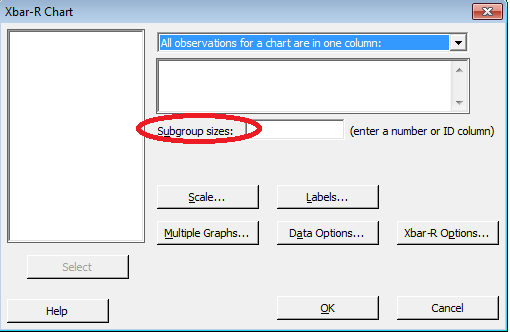It looks like I may have gotten my wish: NBA games should start Christmas day, which will be a huge present to a lot of fans. So while I ponder whether to proceed with a second post about statistics related to the lockout, let's shed some light on a different subject.
From time to time, Minitab users will call in needing assistance with control charts. One common problem people encounter when filling out the control chart dialogs is subgrouping.
For example, here is a dialog box for an Xbar-R Chart (Stat->Control Charts->Variables charts for Subgroups):

The Subgroup sizes box for the Xbar-R Chart will not accept a value of 1, as it has to be a value of 2 or more. And if you find that you have to put a value of 9 or more, you should be using an Xbar-S Chart instead.
Whatever you enter here, subgroup size selection should be rational. As N. R. Farnum points out on page 65 of 1994's Modern Statistical Quality Control and Improvement:
Reasons for forming rational subgroups:
- The variation within the subgroups can be pooled to give a good estimate of the natural process variation.
- The presence of special causes can easily be detected, since they are responsible for any large variations between the subgroups.
But what if you don't have rational subgroups? In that case, a subgroup size of 1 should be used. If you find yourself in this situation, use Stat->Control Charts-->Variables Charts for Individuals when selecting a chart.
There are many situations in which the sample size used for process monitoring is n=1; that is, the sample consists of an individual unit. Some examples of these situations are as follows:
- Automated inspection and measurement technology is used, and every unit manufactured is analyzed so there is no basis for rational subgrouping.
- The production rate is very slow, and it is inconvenient to allow sample sizes of n >1 to accumulate before analysis. The long interval between observations will cause problems with rational subgrouping.
- Repeat measurements on the process differ only because of laboratory or analysis error, as in many chemical processes.
- Multiple measurements are taken on the same unit of product, such as measuring oxide thickness at several different locations on a wafer in semiconductor manufacturing.
So, in essence, when charting for means has no basis or is considered impractical, you could use the I chart.



